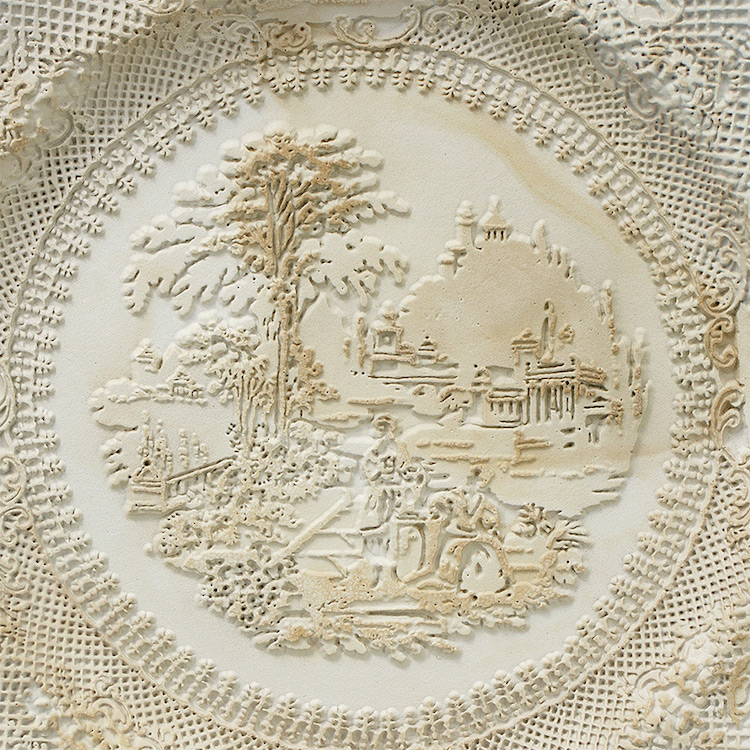HELSINKI, Finland — Artist Caroline Slotte’s reworked second-hand ceramics, characterized by three-dimensional pastoral landscape reliefs, elevates the object’s previous occupation to take on new meaning in her 2015 series Tracing.
The tensions between the recognizable and the enigmatic, the ordinary and the unexpected are recurring thematic concerns.

Caroline Slotte, Tracing Series (7), 2015, Reworked, second-hand ceramics, 10 inches.

(detail)
Through the transformative interventions of her process, Slotte writes her work toys with the inferred perceptions of seemingly familiar objects, affording viewers the opportunity to see beyond the expected with infinite creative possibility.
More recent explorations reveal an expanded interest in material perception and material recognition, teasing out situations where the initial visual identification fails resulting in an unsettling state of material confusion. Demonstrating an engaged sensitivity towards the associations, memories and narratives inherent in the objects.
In an interview with the Houston Center for Contemporary Craft, Slotte explains she used a complex step-by-step sequence of masking and sandblasting to transform painted 2D images into textural 3D reliefs.
“When sandblasting the sand eats away on everything hard. Anything soft and flexible, such as the glue I use for masking, remains, the sand cannot penetrate it. I work my way down, layer by layer, rendering the motif three-dimensional, until the image is transformed into something resembling an imprint or an X-ray, as though a memory of the image had sunk into the plate.”

Caroline Slotte, Tracing Series (10), 2015, Reworked, second-hand ceramics, 8.5 inches.

(detail)
Drawing not only from the memories and stories of these second-hand objects, but also from the images themselves, Slotte says her work doesn’t following a single narrative, often asking viewers to explore their intertwined cultural context.
“I rarely highlight the historical background of the objects as part of the contents of my works. Instead, I often zoom in on associations and stories grounded in the directly-experienced everyday life, situations and events that rarely concern the object’s more general cultural and historical background. In my processing, I strive increasingly to achieve transformations that do not favor one particular reading, but which facilitate multiple associations, multiple narratives. I want to make way for an interpretative openness, so that the frame through which the objects are normally viewed is changed or expanded.”
You can read the entire interview here.
Visit Ferrin Contemporary to see more of Slotte’s work.

Caroline Slotte, Tracing Series (5), 2015, Reworked, second-hand ceramics, 10. 5 inches

Caroline Slotte, Tracing Series (11), 2015, Reworked, second-hand ceramics, 8 inches
Explore more of Cfile’s musings on Slotte’s work.
Do you love or loathe these works from the worlds of contemporary ceramic art and contemporary ceramics. Let us know in the comments.

Add your valued opinion to this post.